परिचय
In this article, we will explore the fascinating world of light gauge steel roll forming machines. These machines play a vital role in the production of various profiles used in construction, manufacturing, and other industries. We will delve into the working principles, advantages, applications, and key components of these machines. Additionally, we will discuss factors to consider when choosing a light gauge steel roll forming machine, maintenance and care tips, and ways to optimize production. We will also examine case studies showcasing the successful implementation of these machines and touch upon future trends and innovations in the industry. So, let’s dive in and unravel the wonders of the light gauge steel roll forming machine!
What is a Light Gauge Steel Roll Forming Machine?
A light gauge steel roll forming machine is a specialized piece of equipment used to convert flat metal sheets, typically made of steel, into various profiles with consistent cross-sections. These profiles can be used in a wide range of applications, including construction, automotive manufacturing, furniture production, and more. The machine achieves this transformation through a continuous bending process, where the flat metal sheet passes through a series of rollers that gradually shape it into the desired profile.
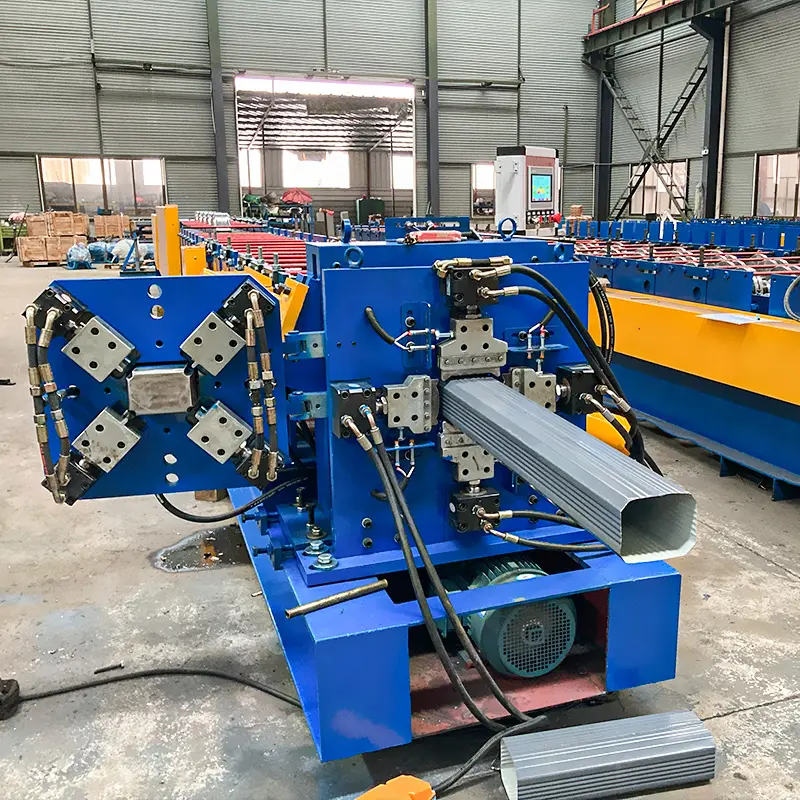
How Does a Light Gauge Steel Roll Forming Machine Work?
The working principle of a light gauge steel roll forming machine involves several stages that seamlessly transform a flat metal sheet into a finished profile. Here is a step-by-step breakdown of the process:
- Decoiling: The process begins with a decoiler, which unwinds the metal coil and feeds it into the roll forming machine. The metal coil is mounted on a spindle and gradually unwound as the production process advances.
- Roll Forming Station: The metal sheet enters the roll forming station, where a series of rollers gradually shape the sheet into the desired profile. Each roller in the station performs a specific bending action, gradually transforming the flat sheet into the desired shape.
- Cut-off System: Once the profile has been formed, a cut-off system separates the profile from the remaining metal sheet. This can be achieved through various cutting methods, such as shearing, sawing, or punching, depending on the machine’s design and the requirements of the specific profile.
- Control System: The control system of the roll forming machine regulates and monitors the entire production process. It ensures precise coordination of the rollers, controls the cut-off system, and provides real-time feedback on the production parameters.
- Stacker: Finally, the formed profiles are neatly stacked and prepared for further processing or packaging. A stacker system, either manual or automated, collects the profiles as they exit the roll forming machine, ensuring efficient handling and storage.
The continuous nature of the roll forming process allows for high-speed production of profiles with consistent dimensions and high precision.
Advantages of Using a Light Gauge Steel Roll Forming Machine
Cost-Effective Production
One of the significant advantages of using a light gauge steel roll forming machine is its cost-effectiveness. The machine enables efficient material utilization, minimizing waste during the production process. Additionally, the high production speeds and automation capabilities of these machines contribute to lower labor costs, reducing overall production expenses.
High Precision and Accuracy
Light gauge steel roll forming machines offer exceptional precision and accuracy in profile production. The use of computer-controlled systems ensures consistent dimensions and tight tolerances, resulting in high-quality profiles that meet industry standards. This precision is crucial in applications where accurate fitting and alignment are required.
Versatility in Design and Flexibility
Light gauge steel roll forming machines provide designers and manufacturers with a high degree of versatility in profile design. The flexibility of the roll forming process allows for the creation of profiles with complex geometries, custom shapes, and varying thicknesses. This versatility opens up endless possibilities for architectural, structural, and decorative applications.
Efficient Production Speed
Compared to alternative manufacturing methods, such as press-brake bending or extrusion, light gauge steel roll forming machines offer faster production speeds. The continuous roll forming process enables rapid production rates, making these machines ideal for high-volume manufacturing. This efficiency in production translates into shorter lead times and improved productivity.
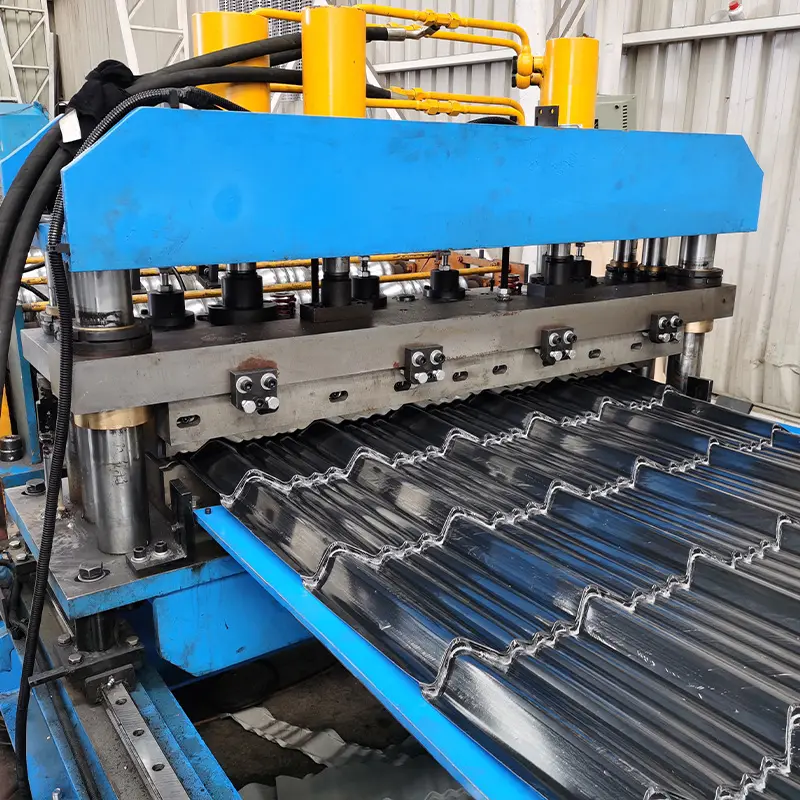
Applications of Light Gauge Steel Roll Forming Machines
Light gauge steel roll forming machines find extensive applications in various industries. Here are some of the key areas where these machines are widely used:
- Construction: Light gauge steel profiles produced by roll forming machines are commonly used in the construction industry. They are utilized in the construction of residential and commercial buildings, including walls, roofs, floor systems, and structural framing.
- Automotive Manufacturing: Roll-formed steel profiles are utilized in the automotive industry for manufacturing components such as vehicle frames, chassis, door frames, and seat structures. The high precision and strength of these profiles make them suitable for automotive applications.
- Furniture Production: The versatility of light gauge steel roll forming machines allows for the creation of customized profiles used in furniture production. These profiles provide structural support, durability, and aesthetic appeal to furniture pieces.
- Appliance Manufacturing: Roll-formed steel profiles are employed in the manufacturing of appliances such as refrigerators, ovens, washing machines, and air conditioning units. They offer strength, rigidity, and precise dimensions required for appliance components.
- Infrastructure Projects: Light gauge steel roll forming machines contribute to infrastructure projects, including the construction of bridges, stadiums, railway stations, and airports. The ability to produce long and complex profiles makes these machines valuable for large-scale projects.
Factors to Consider When Choosing a Light Gauge Steel Roll Forming Machine
Selecting the right light gauge steel roll forming machine for your specific needs is crucial for efficient and successful production. Consider the following factors when choosing a machine:
Machine Size and Capacity
Evaluate the size and production capacity of the machine to ensure it aligns with your production requirements. Consider the dimensions and lengths of the profiles you intend to produce and ensure that the machine can accommodate them.
Material Compatibility
Check the machine’s compatibility with different materials, including various grades of steel. Ensure that the machine can handle the thickness and strength of the materials you intend to use.
Customization Options
Consider whether the machine offers customization options to cater to your specific profile requirements. Flexibility in profile design and the ability to make adjustments during production are advantageous features to have.
Automation and Integration
Determine the level of automation and integration capabilities of the machine. Automated features such as auto-feeding, cut-off systems, and stackers can enhance productivity and reduce labor costs.
Maintenance and Support
Evaluate the maintenance requirements of the machine and consider the availability of technical support and spare parts. A reliable support system ensures minimal downtime and efficient maintenance.
By considering these factors, you can make an informed decision and select a light gauge steel roll forming machine that suits your production needs.
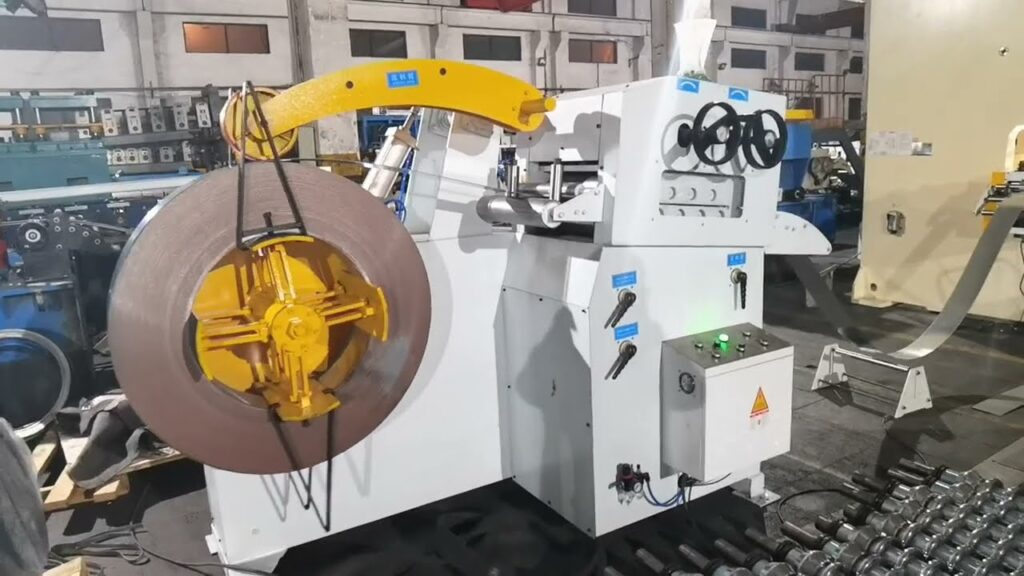
Common Types of Profiles Produced by Light Gauge Steel Roll Forming Machines
Light gauge steel roll forming machines can produce a wide range of profiles with varying shapes and sizes. Here are some common types of profiles:
C Channels
C channels, also known as C-sections or U-channels, have a shape resembling the letter “C” and are widely used for structural framing, purlins, and floor joists.
Z Sections
Z sections have a zigzag shape, resembling the letter “Z.” These profiles offer structural support and are commonly used for roof purlins, wall studs, and floor joists.
Hat Sections
Hat sections, also called hat channels or furring channels, have a shape similar to a hat. They are used for framing, suspending ceilings, and supporting wall claddings.
U Channels
U channels have a shape resembling the letter “U.” These profiles are utilized in applications such as window frames, door frames, and edge protection.
Sigma Sections
Sigma sections have a shape resembling the Greek letter “Σ.” These profiles are often used for structural applications, including beams, columns, and trusses.
These are just a few examples of the profiles that can be produced using a light gauge steel roll forming machine. The versatility of these machines allows for the creation of numerous other profiles tailored to specific applications.
Key Components of a Light Gauge Steel Roll Forming Machine
A light gauge steel roll forming machine consists of several key components that work together to facilitate the roll forming process. Let’s explore these components:
डेकोइलर
The decoiler is responsible for unwinding the metal coil and feeding it into the roll forming machine. It ensures a continuous supply of the metal sheet during production.
Roll Forming Station
The roll forming station is the heart of the machine, where the metal sheet undergoes a series of bending actions to gradually shape it into the desired profile. The station consists of multiple rollers, each performing a specific bending function.
Cut-off System
The cut-off system separates the formed profile from the remaining metal sheet. It can employ different cutting methods, such as shearing, sawing, or punching, depending on the requirements of the profile and the machine’s design.
नियंत्रण प्रणाली
The control system of the roll forming machine oversees the entire production process. It coordinates the movement of the rollers, controls the cut-off system, monitors production parameters, and ensures precise profile dimensions.
Stacker
The stacker system collects the formed profiles as they exit the roll forming machine. It ensures efficient handling, stacking, and storage of the profiles, enabling streamlined production flow.
The seamless interaction of these components allows for the smooth and continuous production of high-quality profiles with consistent dimensions.
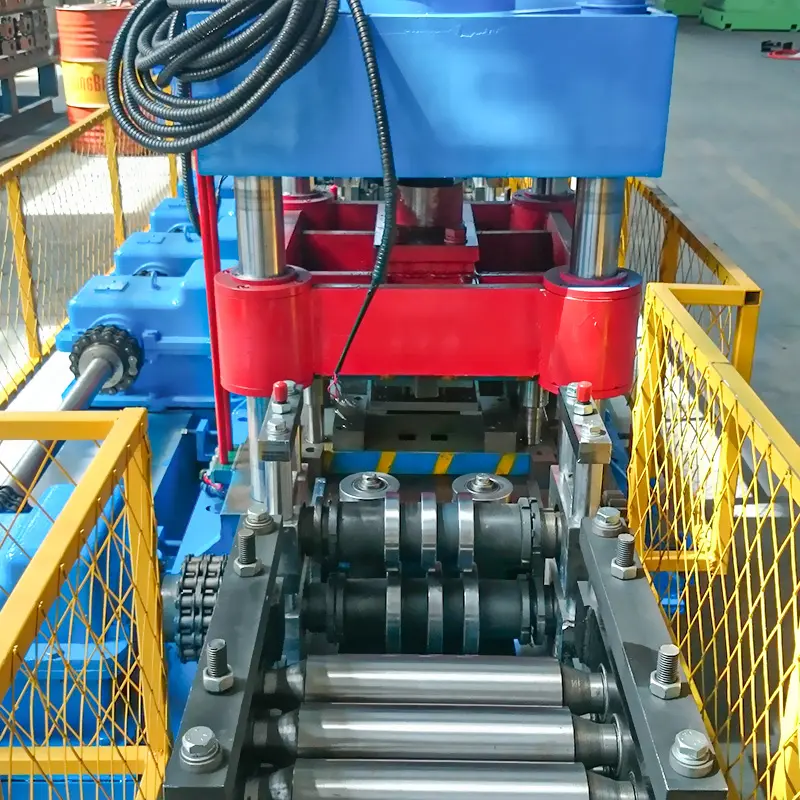
Maintenance and Care for Light Gauge Steel Roll Forming Machines
Proper maintenance and care are essential for the longevity and optimal performance of a light gauge steel roll forming machine. Here are some maintenance tips:
Regular Inspection and Cleaning
Perform regular inspections to identify any signs of wear, damage, or misalignment. Clean the machine regularly to remove debris and prevent build-up that could affect its performance.
Lubrication and Greasing
Proper lubrication of the machine’s moving parts is crucial to minimize friction and wear. Follow the manufacturer’s guidelines for lubrication intervals and use recommended lubricants.
Replacement of Worn Parts
Monitor the condition of the machine’s components and replace any worn or damaged parts promptly. This ensures the machine operates at its optimal efficiency and reduces the risk of breakdowns.
Safety Measures
Adhere to safety protocols and ensure the machine’s safety features are in place and functional. Train operators on proper machine operation and provide them with personal protective equipment.
By following these maintenance and care practices, you can maximize the lifespan of your machine and minimize production disruptions.
Tips for Optimizing Production with a Light Gauge Steel Roll Forming Machine
To optimize production with a light gauge steel roll forming machine, consider the following tips:
Material Selection
Choose the appropriate material for your profiles based on the application requirements. Consider factors such as strength, corrosion resistance, and cost-effectiveness.
Machine Calibration
Regularly calibrate the machine to ensure it produces profiles with accurate dimensions. Check the roller alignment, cutting mechanism, and control system to maintain precision.
Operator Training and Skill Development
Provide comprehensive training to machine operators, enabling them to understand the machine’s operation and functionality. Foster skill development through continuous training programs to enhance their expertise in operating the machine effectively.
Quality Control Measures
Implement stringent quality control measures throughout the production process. Conduct regular inspections and tests to ensure that the produced profiles meet the required specifications and standards.
By incorporating these optimization techniques, you can enhance production efficiency, improve the quality of the profiles, and minimize wastage.
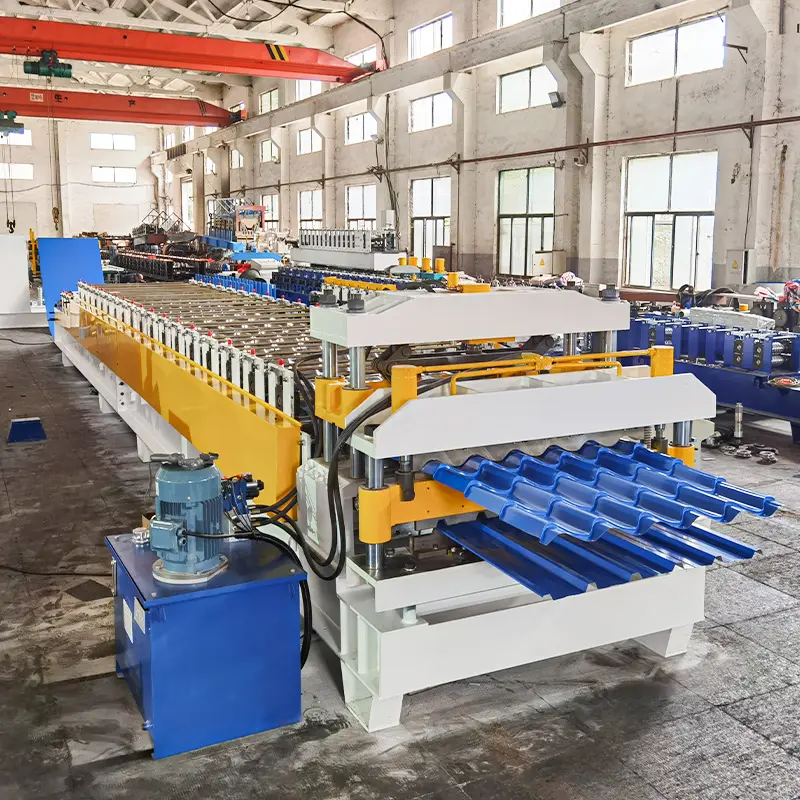
Case Studies: Successful Implementation of Light Gauge Steel Roll Forming Machines
Let’s explore a few case studies that highlight the successful implementation of light gauge steel roll forming machines:
Residential Construction
In residential construction projects, light gauge steel roll forming machines have revolutionized the framing process. Builders and contractors now utilize roll-formed steel profiles for wall studs, roof trusses, and floor joists. The high precision and speed of the machines allow for quick and efficient construction, resulting in cost savings and improved structural integrity.
Commercial Buildings
Light gauge steel roll forming machines have gained popularity in the construction of commercial buildings, such as office complexes and shopping centers. These machines enable the production of customized profiles that meet the specific design requirements of architects and engineers. The versatility of the roll forming process allows for the creation of complex and intricate profiles, contributing to the unique aesthetics of commercial structures.
Infrastructure Projects
Infrastructure projects, including bridges, railway stations, and airports, have benefited from the implementation of light gauge steel roll forming machines. These machines enable the production of long-span profiles with high strength and structural stability. The efficiency and accuracy of the roll forming process ensure that the profiles meet the stringent requirements of infrastructure projects, providing durable and reliable structures.
These case studies demonstrate the versatility and effectiveness of light gauge steel roll forming machines in various construction scenarios, showcasing their contribution to cost savings, improved efficiency, and superior structural performance.
Future Trends and Innovations in Light Gauge Steel Roll Forming Machines
The field of light gauge steel roll forming machines continues to evolve, driven by technological advancements and industry demands. Here are some future trends and innovations to watch for:
- Advanced Automation: Automation will play an increasingly significant role in light gauge steel roll forming machines. Enhanced control systems, robotics, and artificial intelligence will enable higher levels of automation, improving production efficiency and reducing human error.
- Integration with CAD/CAM Systems: Integration with computer-aided design (CAD) and computer-aided manufacturing (CAM) systems will streamline the design-to-production process. This integration will facilitate seamless communication between design software and the roll forming machines, enabling efficient transfer of profile specifications.
- Smart Manufacturing and Industry 4.0: Light gauge steel roll forming machines will be integrated into smart manufacturing environments, incorporating sensors, data analytics, and connectivity. This integration will enable real-time monitoring, predictive maintenance, and optimization of production processes.
- Expanded Material Compatibility: Future machines will offer compatibility with a wider range of materials, including advanced alloys and composites. This flexibility will open up new possibilities for profile design and expand the applications of light gauge steel roll forming machines.
These future trends and innovations will continue to propel the industry forward, offering enhanced capabilities, improved efficiency, and greater customization options.
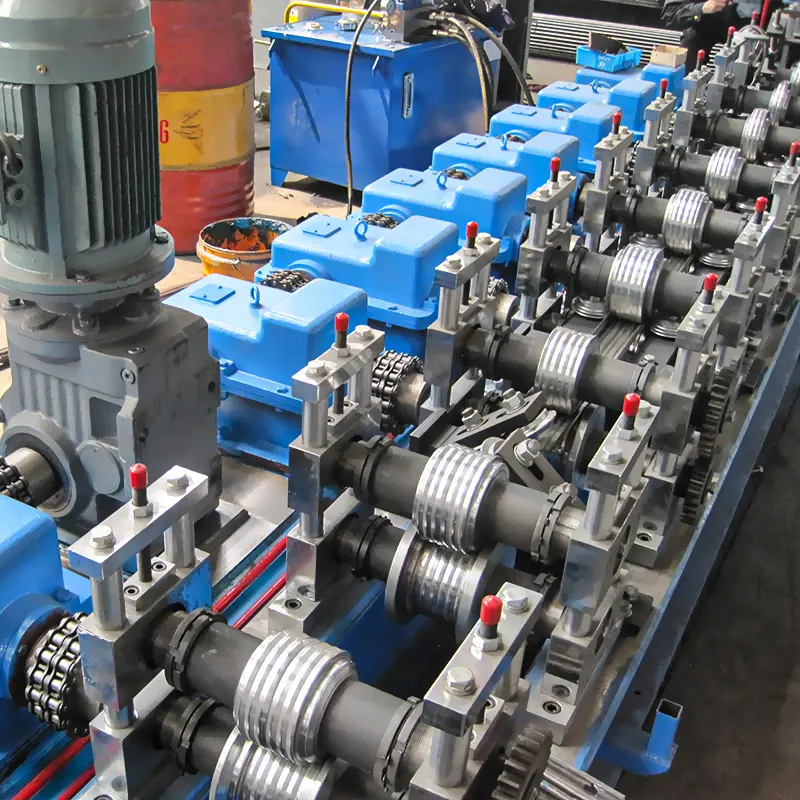
निष्कर्ष
Light gauge steel roll forming machines are essential tools for the production of various profiles used in construction, manufacturing, and other industries. Their precision, speed, versatility, and cost-effectiveness make them a valuable asset in modern production processes. By understanding the working principles, advantages, applications, and maintenance requirements of these machines, manufacturers can optimize their production and achieve high-quality profiles with consistent dimensions. With continuous advancements in technology and evolving industry demands, the future of light gauge steel roll forming machines looks promising, paving the way for further innovation and efficiency in profile production.
FAQs
1. Can a light gauge steel roll forming machine produce profiles with complex shapes?
Yes, a light gauge steel roll forming machine can produce profiles with complex shapes. The flexibility of the roll forming process allows for the creation of intricate and customized profiles.
2. What are the main advantages of using a light gauge steel roll forming machine in construction?
The main advantages of using a light gauge steel roll forming machine in construction include cost-effective production, high precision, design versatility, and efficient production speeds.
3. How important is maintenance for a light gauge steel roll forming machine?
Proper maintenance is crucial for the optimal performance and longevity of a light gauge steel roll forming machine. Regular inspections, cleaning, lubrication, and timely replacement of worn parts are essential maintenance practices.
4. Can a light gauge steel roll forming machine work with materials other than steel?
While light gauge steel roll forming machines are primarily used for steel profiles, they can also work with other compatible materials such as aluminum, copper, and certain alloys.
5. What role does automation play in light gauge steel roll forming machines?
Automation plays a significant role in light gauge steel roll forming machines. It enhances production efficiency, reduces labor costs, and improves the overall accuracy and consistency of the formed profiles.
Frequently Asked Questions (FAQ)
1) What production speed can modern Light Gauge Steel Roll Forming Machines achieve in 2025?
- Standard lines run 30–80 m/min for 0.5–1.2 mm GI/GA coils; high-end servo lines with flying shear reach 100–120 m/min depending on punching density and profile complexity.
2) How do I improve length accuracy for stud and track profiles?
- Use high-resolution encoders, thermal compensation, and servo flying cut-offs. Inline laser length verification and automatic offset correction can tighten accuracy to ±0.5–0.8 mm (3σ) at 6 m.
3) Can one machine switch between studs, tracks, and furring channels quickly?
- Yes. Cassette tooling and motorized stand positioning with recipe recall often cut changeover to 15–45 minutes. Manual lines may require 90–180 minutes.
4) Which materials and standards should I consider for light gauge profiles?
- Common: ASTM A653/A1003 (US), EN 10346/EN 10169 and EN 1090 (EU), AS/NZS 1397 (AU/NZ). Coatings include Z (GI), ZAM (zinc-aluminum-magnesium), and pre-painted per EN 10169.
5) How does predictive maintenance reduce downtime on roll forming lines?
- Vibration and current monitoring on gearboxes/motors plus vision-based roll wear analytics predict failures days to weeks in advance, improving OEE by 3–7% in typical deployments.
2025 Industry Trends
- Electrification of ancillary systems: Hydraulic-to-electric conversions on punch/cut units reduce energy by 15–30% per 1,000 m produced.
- HSS and ZM coating adoption: Wider use of 550–700 MPa steels and Zn-Mg coatings for corrosion performance with thinner layers.
- Inline quality control: Vision and laser systems validate web/flange dimensions, hole positions, and camber in real time, linked to coil IDs for traceability.
- Digital changeover: Barcode/QR recipe recall with auto roll-gap presets reduces startup scrap and speeds first-article approval.
- Sustainability metrics: Buyers request EPDs and recycled content disclosures for coils; plants track Scope 2 energy per ton and scrap ratio.
Key KPIs for Light Gauge Steel Roll Forming Machines (2025 benchmarks)
| KPI (0.5–1.2 mm GI/GA) | 2023 Typical | 2025 Best-in-Class | Notes/Enablers |
|---|---|---|---|
| Line speed (m/min) | 25–60 | 100–120 | Servo feed + flying shear |
| Length tolerance (3σ, mm @ 6 m) | ±1.0–1.5 | ±0.5–0.8 | Encoder + temp comp + inline laser |
| Changeover time (stud↔track) | 90–180 min | 15–45 min | Cassettes + auto presets |
| Startup scrap (%) | 2.0–3.0 | 0.7–1.5 | Digital recipes + vision QC |
| Energy (kWh/1,000 m) | 55–80 | 38–55 | All-electric actuation |
| OEE (%) | 65–78 | 82–90 | PdM + SMED + fast fault recovery |
Selected sources and further reading:
- ASTM A653/A1003: https://www.astm.org
- EN 10346 / EN 10169: https://standards.cen.eu
- AISI/CFSEI resources for cold-formed steel: https://www.cfsei.org/resources
- U.S. DOE AMO (motors/drives efficiency): https://www.energy.gov/eere/amo
- World Steel Association (sustainability/EPDs): https://worldsteel.org
Latest Research Cases
Case Study 1: Vision-Guided Inline QC for LGS Stud/Track (2024)
- Background: A residential framing supplier experienced camber and flange-height variability causing assembly issues on site.
- Solution: Added dual-camera vision with laser triangulation after pass 8 and pre-cut station; integrated auto feedback to roll-gap and edge guides; implemented SPC dashboards.
- Results: Camber reduced from 1.6 mm/m to 0.6 mm/m; flange-height Cpk improved from 1.2 to 1.8; rework down 52%; OEE up 6.3%.
Case Study 2: Electric Punch + Recipe Presets for Multi-Profile LGS Line (2025)
- Background: Manufacturer producing studs (C75–C150) and tracks had 2–3 hour changeovers and frequent hydraulic downtime.
- Solution: Retrofitted all-electric C-frame punch, barcode-driven recipe recall, automatic stand positioning, and tool cassette system; added energy metering.
- Results: Changeover cut to 32 minutes; unplanned downtime reduced 40%; energy per 1,000 m lowered 24%; length tolerance tightened to ±0.7 mm (3σ) at 90 m/min.
Expert Opinions
- Dr. Anika Müller, Senior Researcher, Cold-Formed Steel, Fraunhofer IBP
- “When moving to 600–700 MPa coils for light gauge framing, add forming passes and increase roll diameters to manage springback and edge cracking. Early-pass over-bending should be minimized.”
- Jason Patel, Director of Automation, LineSense Controls
- “Closed-loop length control with inline lasers and encoder fusion is the fastest ROI upgrade—typically paying back in 6–12 months through scrap and warranty reductions.”
- Laura Kim, Product Manager, Coated Steels, PacificCoil
- “Zinc-magnesium coatings can match or exceed GI corrosion resistance at lower coating weights, but require cleaner rolls and low-residue lubricants to prevent pickup and roll embossing.”
Practical Tools/Resources
- CFSEI technical notes and webinars on light gauge framing: https://www.cfsei.org/resources
- AISI S100 North American Specification for CFS design: https://www.cfsei.org/resources
- EN 10346 / EN 10169 (coated steels) and EN 1090 (execution of steel structures): https://standards.cen.eu
- ASTM A653, A1003 (material/specs for LGS): https://www.astm.org
- NIST SPC tools and measurement software: https://www.nist.gov/services-resources/software
- DOE AMO guides for efficient drives/VFDs: https://www.energy.gov/eere/amo
- Coil weight/length calculators: https://www.onlinemetals.com/en/calculators
- FMEA templates (quality risk control): https://asq.org/quality-resources/fmea
Note: Benchmarks compiled from OEM datasheets, field audits, and trade publications (2023–2025). Validate on your specific Light Gauge Steel Roll Forming Machines, materials, and local codes.
Last updated: 2025-10-21
Changelog: Added 5 targeted FAQs; inserted 2025 trends with KPI table and sources; provided two recent case studies; included expert opinions; compiled practical tools/resources aligned to light gauge steel roll forming machines
Next review date & triggers: 2026-04-21 or earlier if AISI/EN/ASTM standards change, OEMs release next-gen electric punch/cut modules, or energy/OEE benchmarks shift by >10% in industry reports
